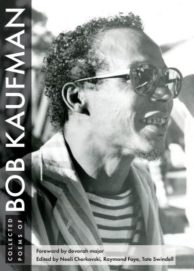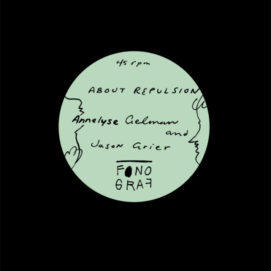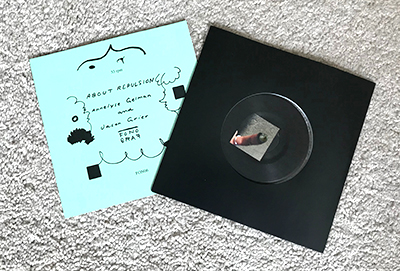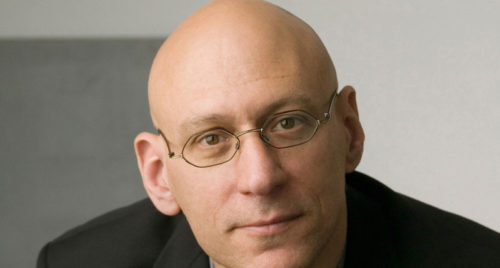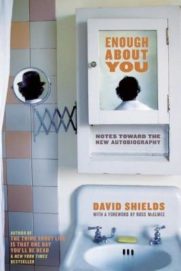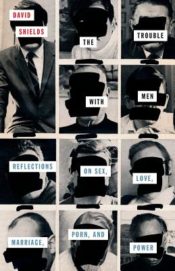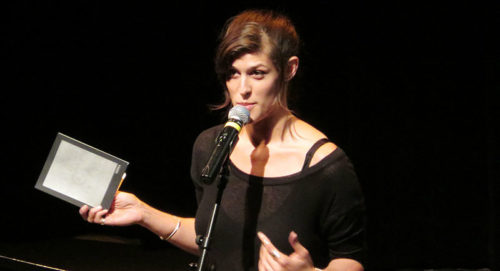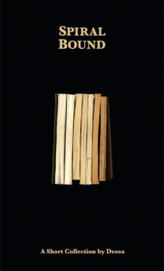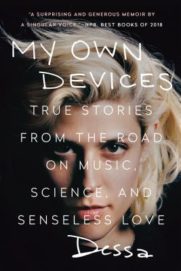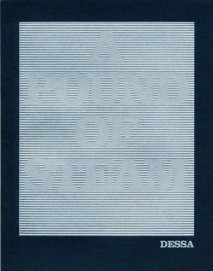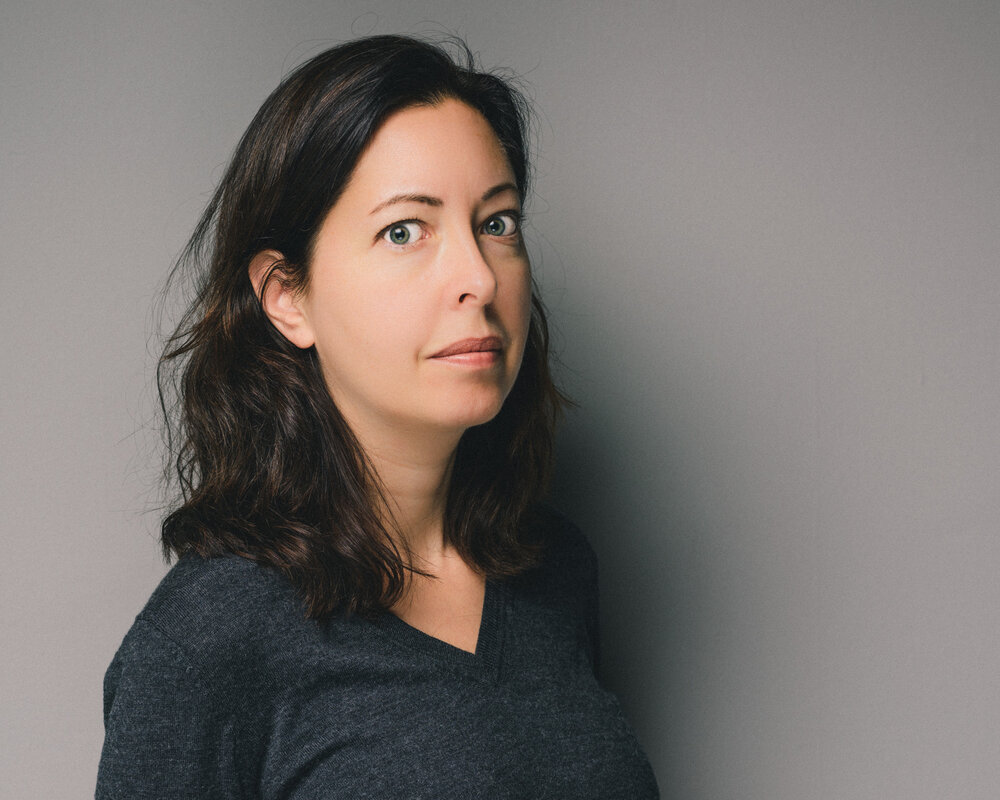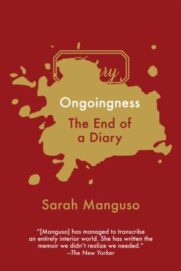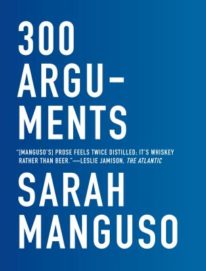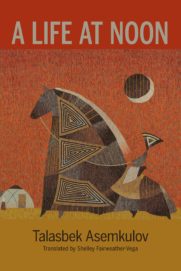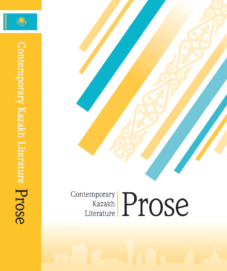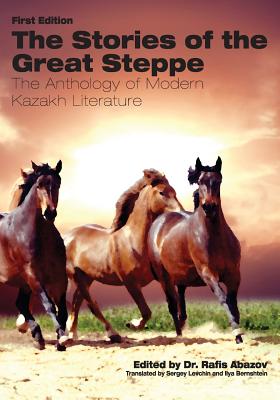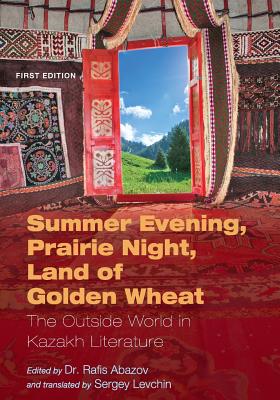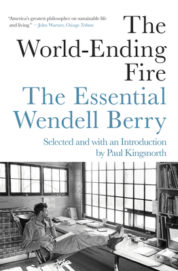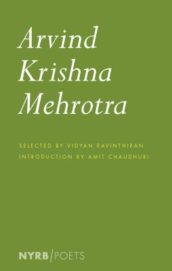
Harvey on Alessandrelli:
I first ran across Jeff Alessandrelli’s work in American Room Weather, a small, collaborative chapbook. I immediately did a Google search, reading everything he’d written that I could find online. Hooked, I tracked down his email address and asked him to send some poems along to Fruita Pulp, an online journal I was publishing at the time. Something that continuously strikes me about Jeff’s work is the playfulness with which he approaches his serious work, reminding me of the German artist Kurt Schwitters’s declaration that art is “A game played with serious problems.” The publication of Jeff’s newest poetry collection, Fur Not Light (Burnside Review Press, $14), was a perfect occasion to hang out in conversation with a poet I greatly admire.
Alessandrelli on Harvey:
I’ll never be a Renaissance person or even semi-sufficient jack of all trades; my focus ebbs and flows and, even if I’m enthusiastic, the skill set is simply not there. Ask me to draw a house and I’ll draw a one-dimensional box; ask me to sing a song and I’ll hum off-key until even the air shudders. For this reason, I admire Kyle Harvey’s multiple vocations to the nth degree: He’s a father, poet, musician, filmmaker, editor, and City Council member, and he does each of those things at a formidably high level. Whatever the opposite of a dilettante is defines Kyle’s mode of being, both artistically and personally. His full-length poetry collection Cosmographies is forthcoming from Cuneiform Press. I was honored to have this conversation with him.
Jeff Alessandrelli: I just finished watching your documentary on the recently-deceased Beat poet Jack Mueller and found it fascinating. Lawrence Ferlinghetti called Mueller “the biggest-hearted poet I have ever known,” and yet he was someone who seemed to shun the spotlight, focusing instead on reading and listening to the work of others (particularly women) rather than attempting to self-mythologize. In 2020, I find that humility supremely endearing—and necessary. What was your own relationship with Mueller, and do you personally identify with his way of accessing the world?
Kyle Harvey: Jack was, and continues to be, one of the most important mentors in my creative life. I was fortunate to meet him in 2012, shortly after moving to Colorado. Danny Rosen of Lithic Press invited me over to hang out with a handful of Western Slope poets as well as “the old man from up on the mountain,” Jack Mueller. We quickly hit it off, talking about poetics and so on, but also about being a father. We became good friends during the last four or five years of his life and I’m grateful for the many things he taught me. Even as he was passing on, deeper into the mystery, he left me with a map leading to further lessons.
I’d never made a film before, but felt compelled to make a film about Jack. He agreed and gave me a list of a few poets in San Francisco to get in touch with, so I lined up interviews with Neeli Cherkovski, Jack Hirschman, and George Scrivani, and flew to SF with only some vague idea of what I was doing. I honored one of Jack’s directives, “Obey emerging form,” in the making of the film, Portolano. So in that respect—obeying the emerging form—yes, I absolutely identify with his way of accessing the world.
Jack’s work as a poet really exemplifies this, too. He’d write a book-length poem which sprawls across the open field of page, followed by a book of prose poems, and then spend years writing 600 pages of couplets. This shifting of gears is one of the things I really like about your new book, Fur Not Light, which seemingly does something similar, though within a single work. For example, “Be Yer Own Hitman (Deathsounds/Lovesongs),” is comprised of 67 quatrains, while the following section, “Nothing of the Month Club,” gives us three prose poems of the same title. Can you talk about the way these varying forms emerge within your work?
JA: Well, as someone who has struggled with life/personal responsibilities vis-a-vis artistic desires as I’ve grown older, watching the Mueller documentary was legitimately moving. The “obey emerging form” dictum seems to be Taoist in nature, and what draws me to it is the way that those three simple words refuse busybodiness and all manners of rumination. It seems like in both his life and writing, Mueller was able to harness all his aspects into one contented whole. That self-unification inspires me and I’ve thought about it a lot: How can I connect what I do on the page to who I am as a person—not in a “confessional” or “autofiction” type of way, but in a way that both acknowledges and considers my faults while also allowing me to move beyond them? It’s an impossible task but it seems like Mueller accomplished it—to be present in the world and on the page fully and completely, inhabiting who he was and no one else.
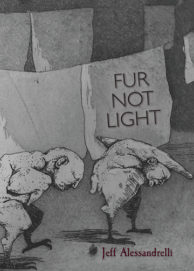 As for my own adherence to emerging form—you work on something for so long and then can’t see really see it. With the exception of “Resignation Modes,” the long middle poem in the collection, much of Fur Not Light was written between 2014-2016, and that period was one of profound change for me. I worked as a copywriter, adjunct professor, and “community resource coordinator” before moving across the country to start a tenure-track academic job, one that I eventually quit. The writer of both “Be Yer Own Hitman (Deathsounds/Lovesongs)” and “Nothing of the Month Club” seems to be profoundly different than the one I am today, especially with regards to form. Somewhere between 2014 and the book’s publication late last year, I became more interested in prose, while also questioning my inclination to write at all—meaning that while working on Fur Not Light I began to consider my writerly attributes and limitations in a more clearly defined way, and as a result the collection reads to me now like more of a questioning than a statement. A line in one of the “Nothing of the Month Club” poems reads: “Studying the bones in a blade of grass, squirms in a cube of ice, Alan’s finally begun the major work necessary to finish his novella I’m a Man of Few Words, None of Them About Myself”—and although it’s tongue-in-cheek, Alan’s predicament is one I can identify with. As a result, writing has simultaneously expanded and constricted for me as I’ve moved from my late twenties to mid-thirties. I don’t think I can do it at all anymore, nor do I want to. What I do want to do, though, is hone and refine what I have at my disposal.
As for my own adherence to emerging form—you work on something for so long and then can’t see really see it. With the exception of “Resignation Modes,” the long middle poem in the collection, much of Fur Not Light was written between 2014-2016, and that period was one of profound change for me. I worked as a copywriter, adjunct professor, and “community resource coordinator” before moving across the country to start a tenure-track academic job, one that I eventually quit. The writer of both “Be Yer Own Hitman (Deathsounds/Lovesongs)” and “Nothing of the Month Club” seems to be profoundly different than the one I am today, especially with regards to form. Somewhere between 2014 and the book’s publication late last year, I became more interested in prose, while also questioning my inclination to write at all—meaning that while working on Fur Not Light I began to consider my writerly attributes and limitations in a more clearly defined way, and as a result the collection reads to me now like more of a questioning than a statement. A line in one of the “Nothing of the Month Club” poems reads: “Studying the bones in a blade of grass, squirms in a cube of ice, Alan’s finally begun the major work necessary to finish his novella I’m a Man of Few Words, None of Them About Myself”—and although it’s tongue-in-cheek, Alan’s predicament is one I can identify with. As a result, writing has simultaneously expanded and constricted for me as I’ve moved from my late twenties to mid-thirties. I don’t think I can do it at all anymore, nor do I want to. What I do want to do, though, is hone and refine what I have at my disposal.
But I’d like to throw the emerging form question back on you: you’re a poet and musician and editor and filmmaker, and also a father and husband. I know you’re now working on a documentary about the canonical Bay area poet Neeli Cherkovski. How does your constantly changing sense of self impact your own personal and artistic desires?
KH: The paradox you’ve mapped, both as your own simultaneous expansion and constriction, as well as Alan’s predicament in “Nothing of the Month Club,” absolutely resonates as I find myself stumbling into my forties. I really appreciate the way that you further describe this in the final lines of the poem:
He’s resigned himself to the cold storage world of America, everdim. He’s committed himself to a constant erection of the heart, evertaut.
Living in the moment before dying into the past, living in the moment before dying into the past, living in the moments.
The juxtaposition of resignation and commitment really rings true for me at this stage of my life. My younger years as a creative were spent unwilling to compromise, holding fast to ideologies. Now, I find that the acceptance of one’s self, as well as the difficulties of the world, offers an opportunity to recommit those energies directly to the act of making. I find myself busier than ever, juggling the responsibilities of family, work, my creative/inner life, and time spent serving my community as a City Council member. Whether shifting gears from working on the Neeli film to parenthood, or from penning my own poems to editing Coolidge & Cherkovski: In Conversation, emerging form isn’t always easy to navigate, nor are the transitions always smooth. Perhaps Jack never meant for the dictum to serve as a blueprint, but instead as provocation toward recommitment.
In your poem, “The Physical Impossibility of Death in the Mind,” it seems as though you continue to explore resignation and commitment. A couple of my favorite lines appear in the poem’s fourth section:
Their solace rests not in selfhood
But in the pack’s continual propulsion
Onward,
Within the context of the poem, “their” refers to sharks, though I feel like these lines are a beautiful metaphor, optimistically embodying a sense of commitment to something greater than one’s self. Despite the struggle you describe, you also seem to be looking forward. Can you talk a little bit more about your commitment to your work? Do you find that it’s a commitment to something greater than selfhood? And is making a hopeful act—or have you discovered hope while immersing yourself in the work itself?
JA: It’s funny—I did a reading with the writer/musician Dao Strom this past week in Portland and we talked about these questions a bit, especially in terms of commitment. Dao’s someone that I look up to because her integrity of self is aspirational for me. Meaning, as detailed in the Preface of her recently reissued collection of novellas The Gentle Order of Girls and Boys, she started out as a fairly straightforward, narrative-driven fiction writer and then as her life progressed she moved away from that, to more hybrid and multi-modal text-and-image based ways of writing. She signed a two-book deal with a major NY publisher and, after publishing her first book, they rejected her second, causing her to release the book with a smaller publisher. And after The Gentle Order of Girls and Boys was released in 2006 and subsequently reviewed by, among other outlets, The New Yorker, Dao didn’t release another book until 2015. She kept writing, creating work very different than what she previously had done, but nevertheless fully true to her own constantly evolving creative self, a self that cared more about the work than commerciality.
As you can tell, I’ve been thinking about Dao’s situation quite a bit lately. As I edge further into my thirties I’m working on being more cognizant of my commitment to myself as a person of value rather than as a writer. Writers are needy: From both their peers and their readers, they want validation, which is sometimes a hard thing to come by, especially if, like me, you write weird poems and essays inspired by even weirder poems and essays—and although I’ve published a decent amount, I frankly haven’t had the best experience with publishers.
With that all being said, I find that the older I get the more I do find making to be a hopeful act. But I also find as much value, maybe even more, in making things that others create. After putting out LPs by some “bigger” poets, my literary press/record-label Fonograf Editions is moving into releasing books and other texts by younger/newer writers, and I’m really excited about that. I also co-host and produce a radio show/podcast here in Portland called The Steer that’s focused on talking to writers about music and musicians about writing, and I’m excited about that too; Season 2 is set to air later this year and we have some cool guests. At this point in life my commitment is to make things constantly, but not necessarily things of my own design. I’m not as interested in myself as I was when I was twenty-five.
With your own move into film and community/City Council work, not to mention the biggest role you have (as a father), I assume you’re thinking and existing on somewhat the same lines? Tangentially, I’ve been reading through your manuscript Cosmographies (congratulations on the forthcoming publication!) and the opening lines to the fourth section of the title poem struck me deeply:
Can
self-exile healthat which
language willbe, as
language is?Never to be-
come a com-plete nation,
never furtherthan a woman
can walkin a day,
unless
governed as suchlove will
always comehow do we love
to order all—
You quote from Jack Mueller in that section of the poem, and the manuscript itself is dedicated to Neeli Cherkovski; a collaborative gratitude seems to emanate from each poem. Am I anywhere near the mark? And was the writing of the volume a slog or did it come together, to quote old school Wu-Tang, like Voltron?
KH: Dao’s situation and this idea of commitment to the ongoing and evolving work itself, rather than compromising the work’s integrity in exchange for validation and praise, really resonates. I can’t wait to read her work!
I spent most of my twenties playing music, both solo and in a number of bands. All the while I was writing poems and short stories, painting, and interested in building community. A small group of us living in the Benson neighborhood of Omaha started a zine called Found—we “published” anything and everything submitted via coffee cans we strategically placed in bars and coffee shops. I participated in a handful of art shows. I went to poetry open mics, almost always just to listen, too nervous to read my work. But really, I identified as a musician. Then, during the last year or so of recording and touring with a band called It’s True, I started spending more and more time reading, writing, and thinking about poetry. That was the emerging form in my life at the time. Shortly thereafter, I really took a step back from music and haven’t spent a whole lot of time looking back. I’ve continued to write songs and record a little bit, but I rarely perform. And I think in some ways, that has alienated many of the people who were interested in my work as a musician.
A similar alienation seems to have occurred in my work as a poet. Many of my earlier poems were more narratively accessible, while my work has continued toward a more process-oriented exploration. I don’t think it’s any secret that work broadly labeled as “avant-garde” enjoys limited readership in an already niche medium. Along those same lines, you hit the nail on the head regarding publishers of this kind of work; most are grinding it out at day jobs and publishing as a labor of love. I’m certainly grateful for the work they do. My experience and understanding has been that a poetry collection’s success directly correlates to the poet’s promotion of the book, which is not the way most poets I know want to spend their time. Which is why I love that you’ve mentioned how active you are in promoting the work of others. I can’t emphasize enough how important this is! I recently visited a local high school to talk to its poetry club; I emphasized that one of the best things they could do is to become engaged literary citizens—to read one another’s work attentively, to start a small poetry journal, to be each other’s champions, and to build a community. Not only is this the good work, but you also learn so much about your own work by reading and editing the work of others.
Similarly, I feel like civically engaging with my community has really broadened my perspective and informed my creative life. Whether sitting on City Council or coaching soccer, each engagement offers insight. And certainly as a father I’ve learned to put the needs of my children first. There is a steep learning curve to letting go of preconceptions and ideologies, but if you don’t, they can really work against raising a child to be strong, assertive, courageous, and free thinking. I’ve made mistakes, and I’ll probably make more before it’s said and done, but I learn a little bit every day, and I think I’m becoming a better person because of my kids. They are my greatest teachers.
Thank you for the kind words about Cosmographies. I’ve always admired Mallarmé’s idea that the ultimate “Work” would be of such great measure that it would take more than a single lifetime. I’m interested in larger structures, intertextuality, and paying homage to the work of my friends and literary influences. I really approach my reading, writing, and ongoing conversations as part of the same practice. My conversations with Jack have always found their way into my work, as do my conversations with Neeli, as do my conversations with Danny Rosen, who I work for at Lithic Press. This is the same as my reading of their work, and that of others. It is absolutely a collaborative gratitude. And I suppose it was like Voltron, but only after a long slog!
I wonder if you could talk about your poetic process. How does your engagement in promoting the work of others inform your own? How does your sense of community interact with your inner and creative life? And tying back into the difficulties of not only publishing but finding readership, how much time do you spend worrying about these things? Fur Not Light is your second title published by Burnside Review Press; I imagine that it’s nice to have the opportunity to continue working with a press you are already familiar with. Can you talk about what that is like? (I really dig the size and design of both Fur Not Light and THIS LAST TIME WILL BE THE FIRST.)
JA: It’s lovely to remember that we share having spent time in Nebraska. Something else that I think we share is a certain awareness that, for all the ways that we’re helplessly invested in our personal selves, the good work of others is just as important as our own, if not more so. Through The Steer and Fonograf Editions, as well as via interviewing and reviewing works by other authors, in my own way I too try to further the notion that, although it’s an overused word, community really can and does mean something, especially on a literary level. But this feels a bit self-congratulatory, so to your questions: My poetic process has greatly changed over the years. When I started trying to write seriously (which was around 2006) I was intent on writing just one type of poem, a vaguely surreal bubblegum type of thing that largely derived from my love of the poetry of James Tate. For years, then, I steered that ship both determinedly and repetitively. I wrote the same poem over and over again, knowing I was doing it and unable to stop. It’s only in the last six or so years that I realized that writing obsessively isn’t the same thing as writing well; there’s a profound difference between the two modes and any reader (and, if they’re being honest with themselves, writer) can intuitively suss out that difference.
Part of that realization came with putting other writers’ work into the world, definitely. Before Fonograf I co-edited a chapbook press, Dikembe, and running it was a largely satisfying endeavor. Putting out the actual books was important, of course, but doing so also forced me to move away from myself, my own whims and predilections. This process has continued over the years, with Fonograf and my other projects, and by virtue of that fact I write less. With so much writing constantly being published, not to mention shouted out and promoted on social media, it’s easy to think that if you don’t publish something every few months you’re falling behind, but I think that such a viewpoint is false. In the past three years I’ve written in spurts and then spent months not writing at all, or at least not writing creatively. There’s a Chinese Buddhist poet I like a lot, Stonehouse, who essentially made silence his “brand” and lived the life of a hermit. Although on a social level I’m decidedly unhermit-like, I am a digital hermit to a certain degree, and not being on those platforms has allowed me a certain freedom. So far as I know, most of my readers are people I meet face to face, at actual readings or events, and that’s a different type of engagement than what might occur digitally. Although it asks more of me on a living and breathing human level, I like it better.
This personal engagement also ties in with both Fur Not Light and THIS LAST TIME WILL BE THE FIRST coming out from Burnside Review Press. In 2005, Burnside Review was a big deal: They published well-known poets and fiction writers, many of them new to me, and would host events semi-regularly, sometimes flying in authors from out of state. When they held their first book contest in 2012, I submitted THIS LAST TIME WILL BE THE FIRST with hope but certainly not any sense of confidence. I was living in Lincoln at the time, actually getting ready to move back to Portland, and getting the call that it was going to be published by the press gave me a jubilation as I prepared to make the cross-country trek. Since then I’ve worked with publisher Sid Miller on a couple of different projects and it’s been a blessing. There’s a transparency there vis-à-vis duty and obligation, one understood by both parties. If Fur Not Light is going to make its way in the world, it’s largely going to be on me to do it; all of the BR editors have day jobs, children, etc. So although that responsibility can easily be viewed as a fault of the press’s “business plan” (and the small press publishing model as a whole), I see it as more of an attribute. There’s a power in knowing that my destiny and narrative is mine alone. To help spread the word about my work I can do a lot or a little, and hopefully I’m able to find a balance. It’s all and always about balance, right?

